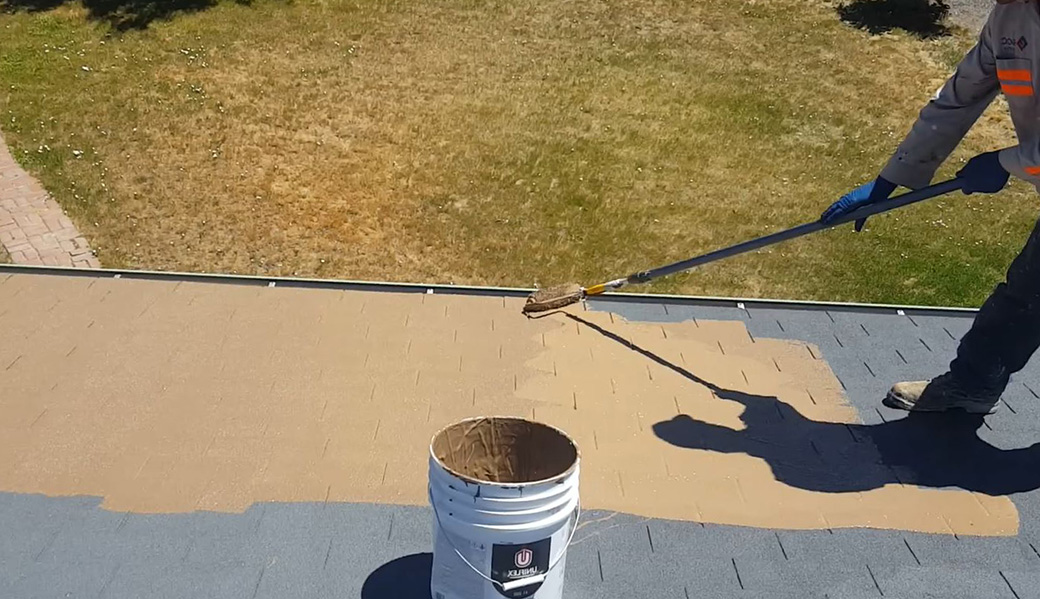What is Roof Coating?
When you want your roof to look as good as new but don’t have the budget available to shell out for a new one, you may find that roof repairs and coating are a good compromise. Cleaning the roof is an essential maintenance process, but you could kill two proverbial birds with one stone by having your roofing contractor coat your roof at the same time as cleaning it. Cleaning is actually the first step of coating, so you’re already halfway there anyway!

WHY CHOOSE ROOF COATING?
There are many benefits to having your roof coated, but the one that holds the most appeal for home and property owners is the fact that it can make your old roof look practically as good as new. In turn, this could allow you to add more to the asking price if you’re thinking about putting your home on the market, and could also help to increase the visual appeal of the neighborhood. With many colors and finishes to choose from, including high-gloss or shine, or matte if you’d prefer), it’s one of the fastest ways to increase kerb appeal.
Roof coating is a cheaper way of sprucing the building up than many other approaches, without the need to remove or replace shingles that are in otherwise good condition. Not only that, coating offers additional protection for your roof, leaving it free to breath as it should do, while still minimizing the chances of having problems with additional moisture and damp. Moss and algae are heavily reduced too, and that means that your roof will last even longer still — you won’t be damaging the structure by constantly heading up there to remove the growth.
It is also wide to bear in mind that any kind of roofing job will usually come with an initial roof assessment and consultation, and that could pick up on potentially dangerous problems, including slow leaks, structure damage, rotting wood, etc. If you don’t regularly inspect your roof (we advise at least one annual inspection), these problems can be easily missed.
ADDITIONAL OPTIONS
You will find roof coating that suits every type of cladding material you could think of, and providing the material has been thoroughly cleaned and prepped for the modification, could even add more protection and benefits than the ones we’ve already mentioned. One example of this is to add an additional layer of coating to your roof, which not only inserts another layer of protection, but could also have a reflective material added to it, upping the energy efficiency of the building. In the long run, this approach could save you hundreds or thousands of dollars in heating and air conditioning costs.
Different products and techniques will offer different benefits to your roof, and we highly recommend speaking with a contractor in your area to find out what could work well for you. If you have a problem with persistent moss growth, for example, a coating that specifically targets that exact problem will not only make your house look better, but will also reduce the chances of you having the same old issues time and time again.
THE ROOF COATING PROCESS
It all starts with an assessment. There is no point in cleaning and then coating a roof that has structural problems and could collapse completely in the next two to five years, and that’s what the assessment is for — picking up on all of the problems that need to be resolved.
Once complete, your roofing contractor will come to you with a plan. All problems will be pointed out to you, and solutions offered. In most cases, there is more than one solution. If there are no problems, the roof coating process will begin. The first step is to clean the entire roof. This is to ensure that the coating adheres to the roof cladding.
All moss and algae will be removed from the cladding, the contractor taking care not to damage anything in the process. Strong and sturdy roofs can sometimes be cleaned with a pressure or jet washer, clearing away not just dirt, but also any biological organisms and garden debris (leaves, twigs, etc.) too. Not all roofs can suit this kind of high-pressure water, however. Weak shingles can easily break or crack with that kind of force applied.
The roof is then left to dry completely, before using airbrushing equipment to apply the coating product, in layers, letting each layer dry before adding the next one. The number of layers required will vary, but your roofer should be able to give you a good idea of how many you’ll need.
Visit our Roof Contractor home page to learn more about us, or hire a local professional from over 100 USA locations.

